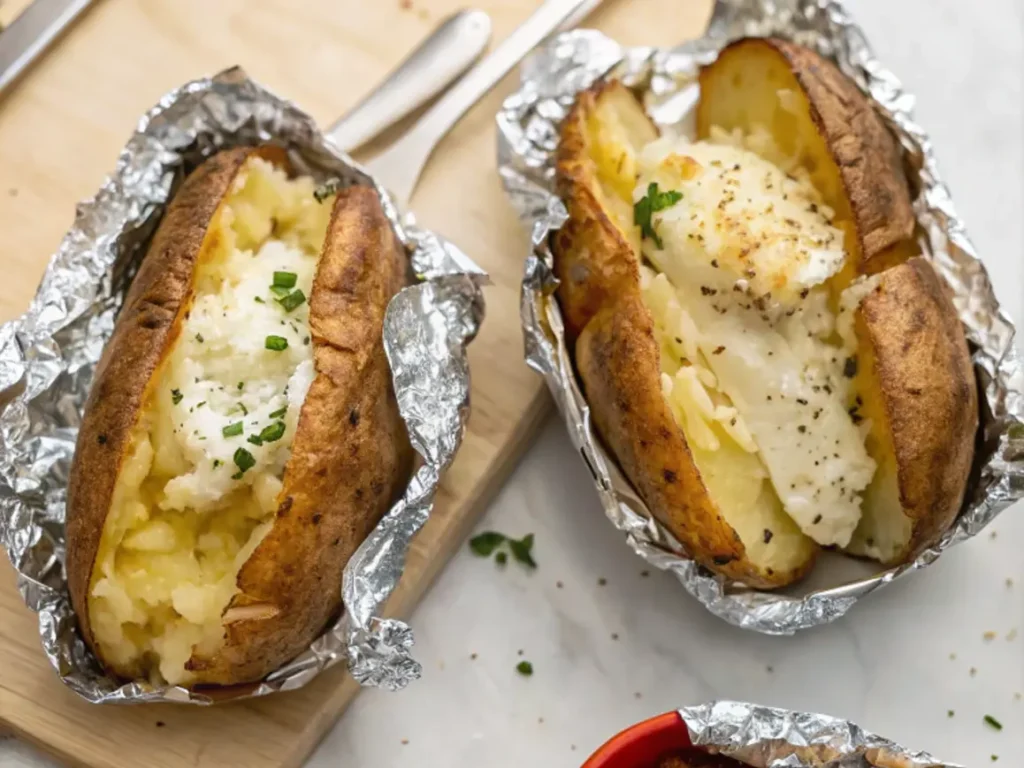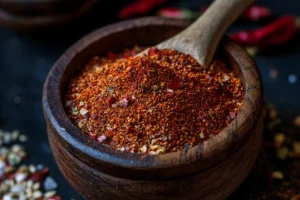
bake potatoes wrapped in foil oven time is a classic method that yields tender, flavorful results. This comprehensive guide will walk you through the entire process, ensuring your baked potatoes come out perfectly every time. Whether you are baking them for a side dish, a main course, or simply as a tasty addition to your meal, following these steps will help you achieve the best results.
Why Bake Potatoes Wrapped in Foil?
Wrapping potatoes in foil before baking offers several benefits that make this method a favorite for many home cooks and professional chefs alike:
- Moisture Retention: The foil traps steam inside, keeping the potatoes moist and preventing them from drying out during the baking process.
- Even Cooking: Foil helps distribute heat more evenly around the potato, which ensures that they cook uniformly, resulting in a fluffy interior.
- Flavor Enhancement: By adding seasonings before wrapping, the foil helps infuse flavors throughout the potato, creating a richer and more enjoyable taste.
Selecting the Right Potatoes
Choosing the appropriate type of potato is crucial for achieving the desired texture, flavor, and consistency when baking. Not all potatoes are created equal, and some varieties are better suited for baking than others.
Best Potato Varieties for Baking
- Russet Potatoes: Known for their high starch content and fluffy interior, russets are the quintessential potato variety for baking. They develop a light, airy texture when baked, which pairs wonderfully with a variety of toppings.
- Yukon Gold Potatoes: These potatoes have a buttery flavor and creamy texture, making them an excellent alternative to russets. While they are less starchy, their natural sweetness and rich texture make them equally delicious when baked.
Factors to Consider When Choosing Potatoes
- Size: Medium to large potatoes are preferable for baking, as they provide a substantial serving size and cook more evenly than smaller ones.
- Skin Quality: Look for potatoes with firm, unblemished skin to ensure freshness and quality. Avoid any potatoes with soft spots, discoloration, or sprouts, as these are signs of aging or spoilage.
Preparing Potatoes for Baking
Proper preparation is the foundation of a perfectly baked potato. Taking the time to prepare your potatoes properly will make a noticeable difference in their texture and flavor.
Cleaning the Potatoes
- Rinse Thoroughly: Wash each potato under cold running water to remove dirt, pesticides, and any debris that may be on the skin.
- Scrub the Skin: Use a vegetable brush to gently scrub the skin, especially if you plan to eat the skin after baking. Potato skins are packed with nutrients, so keeping them clean is essential.
- Dry Completely: Pat the potatoes dry with a clean towel. Drying them ensures that the skin will crisp up nicely during the baking process, especially when wrapped in foil.
Seasoning Options
Seasoning baked potatoes before wrapping them in foil can elevate their flavor and make them a standout addition to any meal. Here are some seasoning ideas to try:
- Classic Seasoning: Rub the potatoes with olive oil and sprinkle with coarse sea salt. This is a timeless combination that enhances the natural flavor of the potato.
- Herb-Infused: Add fresh or dried herbs such as rosemary, thyme, or oregano before wrapping. The herbs will infuse the potato with a delicious aromatic flavor.
- Garlic Lovers: Insert thin slices of garlic into small slits in the potato before wrapping. This adds an aromatic, savory taste that pairs well with the fluffy interior.
wrapping potatoes wrapped in foil oven time
Properly wrapping potatoes in foil ensures even cooking, seals in moisture, and allows the seasonings to infuse thoroughly into the flesh of the potato.
Step-by-Step Guide to Wrapping Potatoes
- Cut Foil Sheets: Tear off sheets of aluminum foil large enough to fully encase each potato, with extra length to fold and seal securely.
- Place Potato on Foil: Center the potato on the foil sheet, ensuring there is enough space on all sides for easy folding.
- Add Seasonings: Drizzle each potato with olive oil and sprinkle with the desired seasonings, such as salt, pepper, herbs, or garlic.
- Wrap Securely: Bring the edges of the foil together and fold them to seal, ensuring no gaps are left. Make sure the foil is snug but not too tight, leaving a little space for the steam to circulate.
Baking Time and Temperature
The baking time and temperature are critical for achieving the perfect texture—fluffy on the inside, and crispy (if desired) on the outside.
Standard Baking Guidelines
- Temperature: Preheat your oven to 400°F (200°C). This is the optimal temperature for baking potatoes to achieve a tender interior and a crisp exterior.
- Time: Bake for 45 to 60 minutes, depending on the size of the potato. Medium-sized potatoes will take closer to 45 minutes, while larger potatoes may need up to an hour or longer.
Adjustments Based on Potato Size
- Small Potatoes: May require only 40 to 45 minutes to bake completely, depending on their size and how tightly they are wrapped.
- Large Potatoes: Could need up to 75 minutes to bake thoroughly. It is important to test for doneness before removing them from the oven.
Testing for Doneness
- Fork Test: Insert a fork into the center of the potato; it should glide in easily without much resistance if the potato is fully cooked.
- Internal Temperature: For an exact measurement, use a meat thermometer to check for an internal temperature of 210°F (99°C), which is ideal for baked potatoes.
Alternative Baking Temperatures
Adjusting the oven temperature can influence both the baking time and the texture of the potato. Here are some common temperature variations and their effects:
Baking at 350°F (175°C)
- Time: Bake for 60 to 75 minutes. This lower temperature takes longer but results in a soft, moist interior.
- Texture: Potatoes baked at 350°F will have a slightly softer skin compared to those baked at higher temperatures.
Baking at 425°F (218°C)
- Time: Bake for 40 to 50 minutes. The higher temperature shortens the baking time, which is ideal if you are in a hurry.
- Texture: Potatoes baked at 425°F will develop a crispier skin, which some people prefer for added texture.
Common Mistakes to Avoid When Baking Potatoes
To ensure your baked potatoes come out perfectly every time, avoid these common mistakes:
- Overcrowding the Oven: Overcrowding can lead to uneven cooking. If you are baking multiple potatoes, make sure there is enough space between them for air to circulate.
- Wrapping Too Tightly: Wrapping the foil too tightly around the potato leaves no room for steam to build up, which can result in a less tender texture.
- Skipping the Preheat: Always preheat the oven before placing the potatoes inside. This ensures consistent cooking and prevents the potatoes from becoming soggy.
Serving Suggestions for Baked Potatoes
Elevate your baked potatoes by trying out these serving suggestions, whether you are serving them as a side dish or the main attraction:
- Classic Toppings: Top your baked potato with butter, sour cream, chives, and shredded cheese for a traditional, comforting flavor combination.
- Hearty Additions: Add chili, bacon bits, or steamed broccoli for a more substantial, filling dish that can serve as a meal on its own.
- Healthy Options: Use Greek yogurt instead of sour cream, and top with salsa or a sprinkle of nutritional yeast for a healthier alternative that is still packed with flavor.
Frequently Asked Questions (FAQs)
Does it take longer to bake potatoes wrapped in foil oven time?
Wrapping potatoes in foil can slightly increase baking time due to the insulation effect of the foil. However, it helps retain moisture, resulting in a tender interior that many people enjoy. The foil also helps the potato cook evenly by trapping steam, which prevents the potato from drying out.
How long does it take to bake potatoes at 400 degrees?
At 400°F (200°C), baking potatoes typically takes 45 to 60 minutes, depending on the size of the potatoes. Larger potatoes will take closer to 60 minutes, while smaller ones may only need 45 minutes.
Should you wrap a baked potato in aluminum foil in the oven?
Wrapping a potato in foil before baking is optional. Wrapping helps keep the potato moist but results in a softer skin, which some people prefer. If you enjoy a crispy skin, leave the potato unwrapped and bake it directly on the oven rack.
How long should you bake a potato at 350 degrees?
At 350°F (175°C), you should bake the potato for 60 to 75 minutes, adjusting for size. This lower temperature takes longer to cook the potato, but it can help prevent the skin from becoming too crispy, resulting in a softer, more tender potato.
For even more amazing ideas to elevate your next special dinner, explore these must-try recipes that are guaranteed to impress your guests and turn any meal into a memorable occasion:


